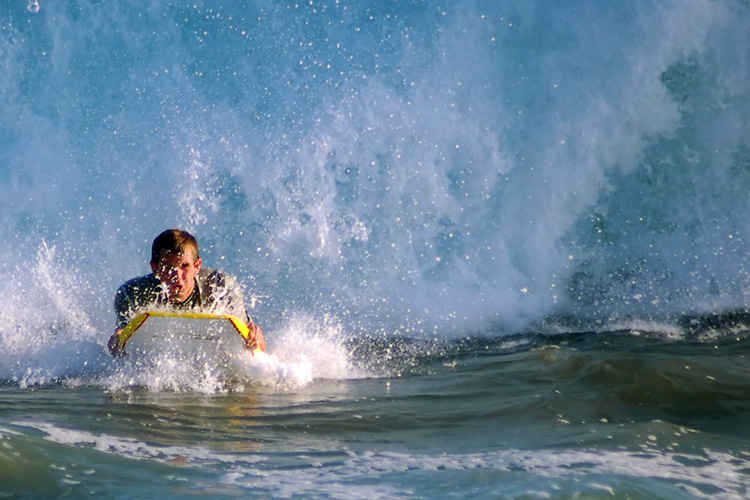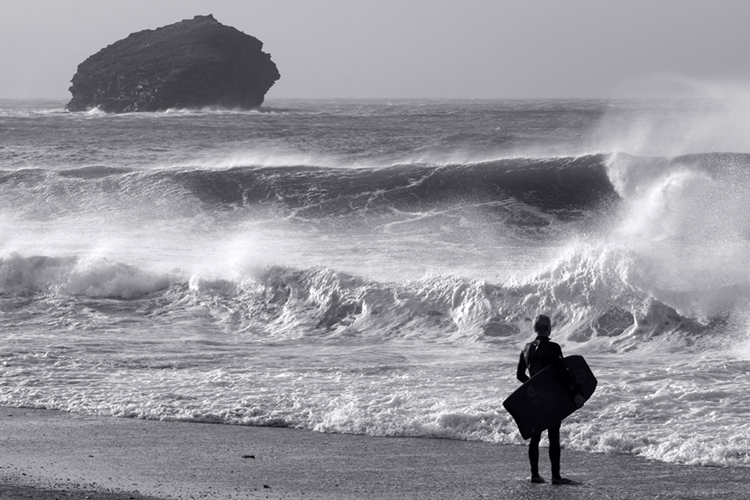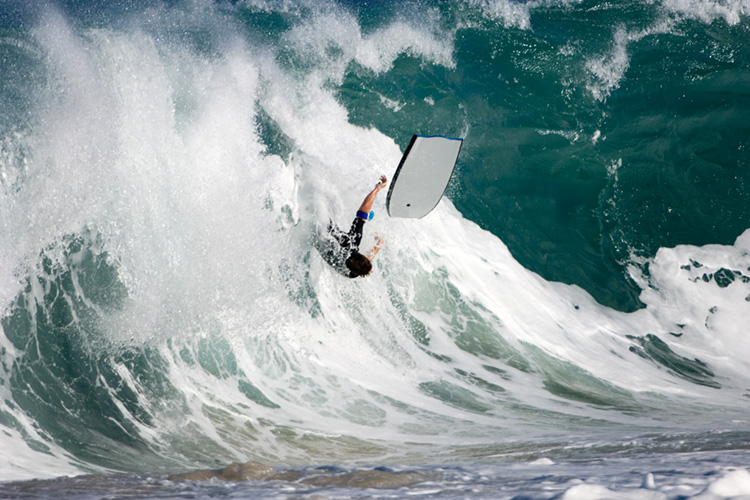I've been surfing since the early 1990s. When I first stood up on my Mike Davis surfboard, bodyboarding was still in its infancy.
Back then, the concept of going "online" to learn more about a sport or product simply didn't exist.
So, when I saw the first small, rectangular polystyrene boards gliding across the small whitewater waves, I just couldn't imagine it would become a proper sport.
And I only knew surfing "existed" because I saw it in a magazine.
Bodyboarding hit Europe - where I live - much later than surfing. Surf shops were a rare luxury, and bodyboards were still not relevant to the business.
The act of riding a wave in a prone position was considered a fun activity that you could do on a warm summer day, for example, with floating mats.
Morey Boogie was already thriving in America but hadn't conquered the world yet. Interestingly, one of the company's first big hits in Europe was the Mach 7-SS.
The Mach 7-SS was launched in 1992 and quickly became a fixture in the Old Continent's lineups, especially in France, Portugal, Spain, and the United Kingdom.
But, by that time, I had already fallen in love with surfing.

Standing Up... On a Bodyboard
Some of my closest friends were bodyboarders. And they became good riders. So, I quickly learned to respect the sport and always considered spongers to be part of the surfing fraternity.
But every time I tried to ride the boogie board, I found catching and trimming waves difficult.
Why? I believe I have never felt comfortable paddling a wide and highly floatable board. It seems like whenever we start paddling for a wave, our chest sinks on the deck of the board, making it hard to take off.
All I could do was ride a whitewater wave toward the shore... standing up on the bodyboard. My boogie friends were impressed; I just thought it was the natural thing to do.
But riding a broken wave toward the beach isn't bodyboarding. It's much more than that. Sometimes, when conditions get gnarly, boogers are the only ones out-the-back.
So, recently, I once again swapped boards with one of my best friends. But this time, I've also put on a pair of fins because I thought they would help me propel into the waves.
The conditions were perfect - three-foot winter rollers with enough power to help me get into bodyboarding and become an all-around waterman.
However, reality would teach me another lesson - bodyboarding basics are hard to master.

Flippers and Bottom-Turns
In fact, the pair of flippers made it even harder for me to get into the waves. I couldn't sync body movements correctly, and waves constantly passed me by.
I struggled to get my feet underwater in order to kick my legs, and I figured out I was always in "surfing mode."
After failing to catch an open-face wave, I decided to try it out on small, broken waves. I was able to be caught by the whitewater, but then I just couldn't perform a bottom-turn.
How do you turn a bodyboard? It's impossible - whenever I try to sink the rail, the bodyboard rotates and glides sideways toward the beach.
Confused and frustrated, I decided to paddle in and put an end to another discouraging bodyboarding experience. But wait. How do I get out of the water with fins on?
The moral of the story is that bodyboarding is a complex water sport that involves a lot of body coordination and positioning on the board.
If you come from a surfing background, you'll need hours of practice to succeed.
As a confident and intermediate/advanced surfer, I genuinely believe that bodyboarding is way more difficult to learn than surfing.
Just give it a go, and you'll see what I mean. Bodyboarders of the world - kudos to all of you!
Words by Luis MP | Founder of SurferToday.com
